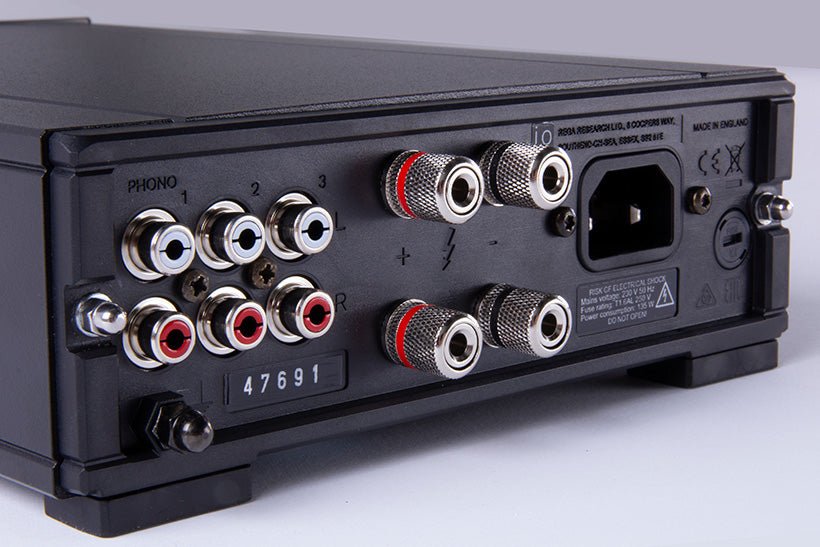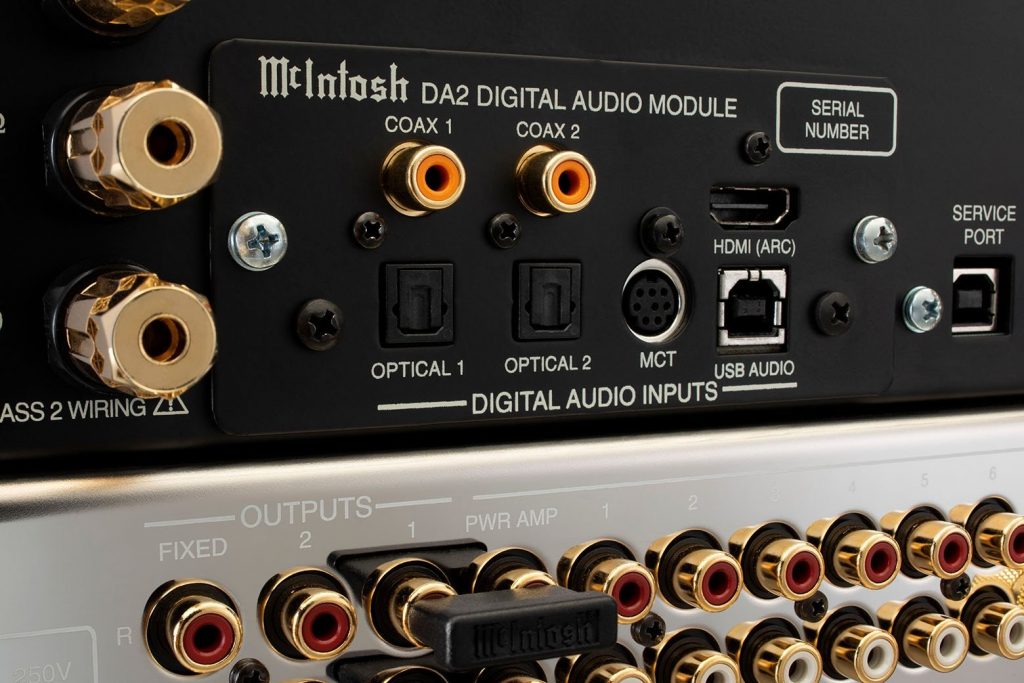Shopping for a new power amplifier can become an overwhelming experience since there are so many sizes, styles, and types to choose from. Knowledge of power amplifiers and their specifications can go a long way in selecting the appropriate model for your needs. Before browsing for a new power amplifier, I’d recommend evaluating your needs and intended uses and considering the following:

Power Handling
First, consider the power output required for your application. Power amplifiers are rated in watts, and you will need to choose one that can provide the amount of power required for your specific application. For example, if you are using the power amplifier for a public address system, you will likely need a higher power output than if you are using it for a small home theater system.
Connectivity Options
The connectivity options available are also incredibly important, and while this ultimately depends on your intended uses (and what equipment you’ll be using), it’s generally a good call to have one or two alternative options available.
One of the most common connectivity options for amplifiers is RCA connections. RCA connections, or phono connectors, are typically used to connect audio components such as CD players, turntables, and tape decks to an amplifier. These connectors are typically color-coded red and white, with the red connector carrying the right channel audio signal and the white connector carrying the left channel audio signal.
Another common connectivity option for amplifiers is XLR connections. XLR connectors are typically used in professional audio applications and are known for their high-quality audio transmission and low noise levels. XLR connectors are typically found on professional audio equipment such as mixing consoles and microphones. These connectors are typically used to connect balanced audio sources to an amplifier.
The 1/4 inch TRS (Tip Ring Sleeve) connectors are a third connectivity option for amplifiers. These connectors are commonly found on guitars, basses, and other instruments. They can also be found on equipment such as effects processors, drum machines, and audio interfaces. The 1/4-inch TRS connectors typically connect unbalanced audio sources to an amplifier.
A fourth connectivity option for amplifiers is USB, commonly found on many computer audio interfaces, digital audio players, and amplifiers. This connection allows you to connect your digital devices to your amplifier and play digital audio files directly.
In addition to these common connectivity options, many amplifiers feature inputs and outputs, such as speaker terminals, binding posts, and banana plugs. These connectors allow you to connect your amplifier to speakers and other audio components, such as subwoofers and crossover networks.
In summary, when choosing an amplifier, it is important to consider the available connectivity options and which will work best for your specific application. RCA, XLR, 1/4 inch TRS, and USB are common connectivity options found on many amplifiers. Many amplifiers also feature inputs and outputs, such as speaker terminals, binding posts, and banana plugs, which can connect your amplifier to other audio components.

Amplifier Classes
There are several different types of power amplifiers, including Class A, Class B, Class AB, and Class D. Each type has its own advantages and disadvantages, and the one you choose will depend on your specific needs.
- Class A amplifiers are known for their high linearity and low distortion, making them a good choice for audio applications.
- Class B amplifiers are more efficient but may produce more distortion.
- Class AB amplifiers are a compromise between the two, offering a balance of efficiency and linearity.
- Class D amplifiers are highly efficient and are often used in portable audio systems and car audio systems.
Technical Specifications
You should also consider the signal-to-noise ratio of the amplifier. This measures the amount of noise present in the output signal and is typically measured in decibels. A higher signal-to-noise ratio means less noise in the output signal, which can be important for audio applications.
Another important consideration is the input and output impedance of the amplifier. The input impedance is the resistance that the amplifier presents to the input signal, while the output impedance is the resistance that the amplifier presents to the load. It is important to match the input and output impedance of the amplifier to the input and output impedance of the signal source and load, respectively, to ensure maximum power transfer and to prevent damage to the amplifier or other components in the system.
You should also consider the distortion level of the amplifier. Distortion is any deviation of the amplified signal from the original signal. Distortion can be caused by non-linearities in the amplifier’s transfer function, which can cause the output signal to differ from the input signal. This can be measured in percentage; the lower the percentage, the better the amplifier.
Another important factor to consider is the frequency response of the amplifier. This measures the amplifier’s ability to amplify signals across a range of frequencies. The frequency response of an amplifier should be as flat as possible, meaning that it should amplify all frequencies in the range of interest with equal gain. If the frequency response is not flat, certain frequencies may be amplified more than others, leading to distortion.
Finally, you should consider the size and cost of the amplifier. Power amplifiers can vary greatly in size, from small portable units to large rack-mounted units. The size and cost of the amplifier will depend on the power output required and the features you need.
How Much Power Do I Need?
To determine which power amplifier you need based on power handling, you’ll need first to consider the maximum power handling capabilities of the speakers you’re using and the desired output volume for your system. Once you have this information, you can use it to determine the minimum power rating of the amplifier you need. The amplifier should be rated to deliver at least as much power as the speakers can handle and, ideally, slightly more to ensure optimal performance.
Speakers’ power handling is usually given as the RMS (Root Mean Square) power handling. This is the power the speakers can handle continuously without damage, rather than the peak power handling, which is the amount of power that the speakers can handle for short bursts.
Also, the amplifier should be able to deliver the power you need at the speaker’s impedance. The amplifier must work harder to deliver the same power as the impedance changes. That’s why checking the amplifier’s power output at different impedance levels is important.
Crown Amplification has developed a calculator for determining the required power handling specifications, check it out here.

So, What Type of Amplifier Suits Me Best?
The type of amplifier you’ll need for specific uses can vary greatly, and while there are several all-purpose options available, you may need something more specialized:
For TV, Stereo or Surround Sound
When selecting a home theater amplifier, it’s important to consider the number of speakers in your system, the size of your room, and your desired sound quality. You will also want to look for features like HDMI support, built-in Bluetooth, and compatibility with different surround sound formats.
Vinyl Playback
Vinyl record players, also known as turntables, require a specific type of amplifier known as a phono preamp or phono stage. This is because the audio signal produced by a turntable is much weaker than the signal produced by other audio sources such as CD players or streaming devices. A phono preamp is used to boost the level of the audio signal from the turntable so that it can be amplified and played through a set of speakers or headphones.
There are two types of phono preamps: passive and active. Passive phono preamps are the simplest and typically consist of a simple resistive network. On the other hand, active phono preamps use active circuitry, such as an op-amp, to boost the audio signal. Active phono preamps are generally better than passive ones as they produce less distortion and noise and can provide more precise equalization and RIAA correction.
When selecting a phono preamp, it’s important to consider the type of turntable you have and the sensitivity and impedance of your phono cartridge. Some phono preamps include a switch to accommodate different cartridge types, and some are specifically designed to work with moving coil or magnet cartridges.
Additionally, some amplifiers and AV receivers have a built-in phono preamp, so you can amplify the signal from the turntable without needing an external phono preamp. However, these built-in phono preamps may not be as high-quality as a dedicated one.
It’s also worth considering the overall sound quality you are looking for and the other components in your audio system when selecting a phono preamp. Some high-end phono preamps may offer better sound quality but have a high price tag.
Car Audio
Your amplifier requirements are somewhat simplified for driving your car’s stereo system since connectivity options, impedance, and other technical specifications are generally not as important. However, the amplifier class is something worth considering:
There are two main types of car amplifiers: Class A and Class D. Class A amplifiers are known for their high-fidelity sound but are less efficient and can generate a lot of heat. Class D amplifiers are more efficient and produce less heat but may not sound as good as Class A amplifiers. Additionally, car amplifiers can come in different configurations, such as mono, 2-channel, 4-channel, or multi-channel. Your configuration will depend on how many speakers you have in your car and how you want to configure them.





